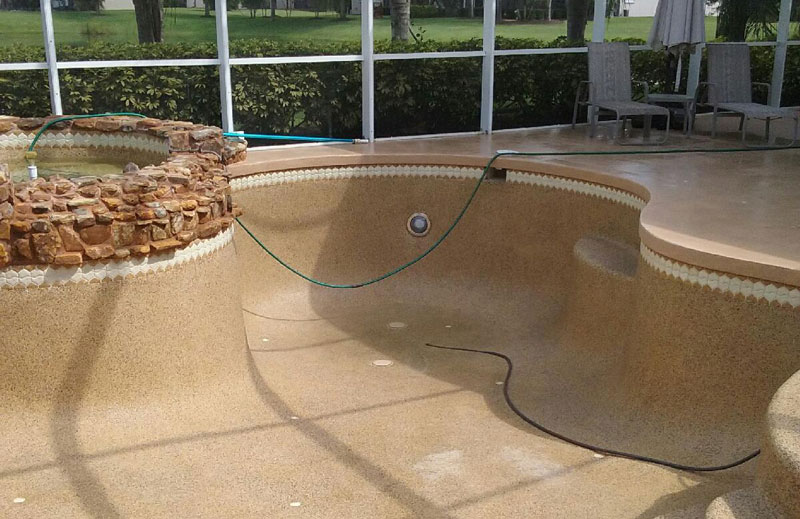The Atlantic hurricane season runs from June 1 through October. As Southwest Florida sits on the shores of the Gulf of Mexico, we sometimes pay a price for our tropical coastal paradise—as we’ve been reminded in recent years with direct hits from storms like Irma in 2017. While we can’t stop the hurricanes from coming, we can do our best to prepare for them, and that includes making sure our pools are ready before the storms hit.
Keep it Full (and Chlorinated)
Because the weight of the water puts stabilizing pressure on the floor and walls of your pool, a full pool helps to combat the changes to the surrounding ground that occurs with heavy rains and a rising water table. Without that pressure, your pool may shift, crack or sink into the soft earth.
But mind the runoff: Heavy rains might push your pool’s water level over the edge, and if there’s a chance that an overflow would cause damage to surrounding structures, you can lower your pool’s water level a foot or two to lessen that risk. Add extra chlorination to account for the rain.
Shut it Off
Cut electrical power off at the source—the circuit breakers—to prevent disaster from flooding or wind damage. Make sure your motors and pumps are covered tightly or removed altogether.
Open a Vent
Of course, your pool screen is exceptionally vulnerable to high winds and debris. One of the easiest ways to mitigate damage is to leave a vent, either by leaving a screen door open or removing panels on either side of the pool, so that wind can flow through more easily. (In fact, screen doors should be well secured or removed entirely.)
Take it Inside
Popular hurricane lore says to toss your pool furniture into the pool itself to keep it from being blown around. Unfortunately, this practice can damage your pool’s finish and complicate cleanup efforts. Just take your chairs, tables and other loose items inside—it’s safer and, in the long run, easier.


